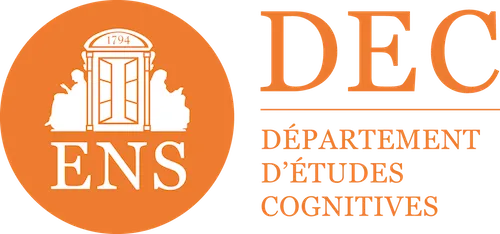

ROI training: the cognitive science approach to measure real impact
Measuring the return on investment (ROI) of training courses remains the major challenge for training managers. Traditional methods often fail to capture the real impact on skills. Learn how the cognitive science approach is transforming assessment and measuring what really matters: participants' behavioral change.
Beyond myths: why we are lacking traditional ROI methods
The balanced quest for ROI: between rigor and pragmatism
Theoretical models like Kirkpatrick and Phillips promise comprehensive evaluation but run up against real business constraints. These methodologies require considerable resources that are rarely available within organizations.
The quest for the perfect ROI often paralyzes any evaluation initiative. Training managers, intimidated by the complexity of calculating ROI, are giving up on measuring rather than adopting an imperfect but functional approach.
A pragmatic approach is needed: an approximate ROI is better than no measurement. Cognitive science teaches us that assessment, even if imperfect, allows you to continuously improve your training programs.
Enriching your indicators: beyond satisfaction
From smiles to skills: the complementarity of indicators
Satisfaction and completion rates are accessible and useful indicators, often constituting a pragmatic first step in evaluation. They offer immediate feedback on the training experience and can point to obvious problems.
However, these indicators have limitations that should be recognized. A participant can enjoy training without necessarily changing their professional behaviors. Commitment during training is not always synonymous with application in the field.
For a complete picture, it is a good idea to gradually enrich these basic indicators with more advanced measures. Cognitive science shows us how to complement this approach with behavioral indicators that measure the ability to mobilize knowledge in real life situations.
Complementarity of evaluation indicators:
- Basic indicators (starting point):
- Participant satisfaction rate
- Number of hours of training completed
- Program completion rate
- Leading indicators (to be developed gradually):
- Knowledge retention at 3 months
- Rate of application of skills in real life situations
- Reduced task execution time
- Reduction of errors in critical processes
The financial equation: calculating what really matters
Full cost x-ray
The “I” in ROI represents total investment, not just visible expenses. To get an honest ROI calculation, you must first capture all the resources involved in your training.
The accurate assessment of the time invested in content creation is the basis for calculating the relevant ROI. Beyond explicit invoices, don't forget the hidden costs: coordination time, review sessions, iterative adjustments, mobilization of internal experts. These hours, often invisible in traditional budgets, sometimes represent up to 60% of the real cost of development.
Training methods have a drastic impact on the cost structure. Face-to-face training incurs recurring costs (travel, rooms, trainers) while online training focuses the investment on the initial design. This fundamental difference changes the long-term ROI equation.
Digital training allows considerable economies of scale. An e-learning module can be deployed to a large number of employees at almost zero marginal cost, transforming the ROI equation and improving profitability. This characteristic often justifies a larger initial investment for exponential benefits.
The multiplier effect: how AI reduces costs and amplifies impact
Educational AI is revolutionizing the cost/impact equation by automating time-consuming tasks. Business experts can create effective courses without intermediaries, significantly dividing design time.
The initial investment in author tools intelligent pays for itself quickly thanks to the multiplication of content created. The ROI curve accelerates with each new program generated, an essential aspect to justify the training budget.
Take the theoretical example of a sales team: automating creation through educational AI could significantly reduce the cost per participant while increasing the effectiveness of learning.
The learning radar: detecting real cognitive changes
The “before-and-after” technique: measuring what has really changed
The design of comparable evaluations before and after training requires methodological rigor. The questions should assess the same skills but not be the same to avoid memory bias.
To isolate the specific impact of the training, include control questions on areas not covered. This technique makes it possible to distinguish the effects of training from other influencing variables.
The analysis of the results must identify not only the overall progress but also the areas of strength and weakness, allowing you to continuously optimize your learning devices.
💡 Good to know: For relevant pre-post test evaluations, focus on concrete application situations rather than theoretical knowledge. Offer practical cases that are the same in structure but different in content.
The battle against oblivion: why your education is disappearing from the memories
Cold evaluations carried out several weeks after the training reveal its true effectiveness. Without anchoring in long-term memory, even the most popular courses will have no lasting impact.
La Ebbinghaus forgetting curve shows that without intervention, we lose up to 80% of the information acquired in one week. Cognitive science offers strategies to counter this natural phenomenon.
Flashcards and micro-challenges are powerful ways to measure and strengthen memory, offering a double value that contributes to organizational success.
From knowledge to action: tracking the impact on the ground
The challenges that transform: converting ideas into professional habits
Designing measurable post-training application challenges turns passive learning into actions. These micro-missions, integrated into daily professional life, must remain simple but meaningful.
The methodical monitoring of actions in the field generates valuable data on the real application of skills. The frequency, quality and impact of these applications are direct indicators of ROI.
A 5% reduction in the processing time of a file directly translates into numerical savings, tangible proof of the benefit for the company.
Example of a micro-challenge path for commercial training:
- Week 1: Identify three opportunities to use the learned questioning technique
- Week 2: Apply the presentation structure with three different customers
- Week 3: Dealing with an objection using the CRAC method
- Week 4: Analyze and share the numerical results obtained
The revealing assistant: What the questions after the training say
Didask is now the only player on the market to offer an AI educational assistant specially designed to support learners well beyond initial training. Unlike generic chatbots, this intelligent assistant relies on cognitive science to support the concrete application of skills in the workplace.
The usage data of this assistant reveals the real needs of learners after they return to the field. The analysis of these interactions makes it possible to precisely identify areas of fragility that require reinforcement, thus offering a unique window of observation on the real application of knowledge.
Recurring questions addressed to the assistant are valuable warning signs for the manager. They reveal persistent gaps in learning and guide the instructional adjustments needed to improve training effectiveness, an exclusive feature that is transforming ROI measurement.
Warning signs to watch out for:
- Repeating the same questions by several people
- Requests for clarification on concepts assumed to have been acquired
- Poor use of the assistant on some critical modules
- Gap between theoretical knowledge and practical applications
- Questions that reveal fundamental misunderstandings
Your roadmap: implementing a scientific measure of ROI
The 5 key steps to scientifically prove the impact of your training
The precise definition of expected behavioral changes is the basis for any relevant ROI measure. Identify observable and quantifiable behaviors to create a solid chain of evidence.
The strategic integration of measurement points throughout the course makes it possible to monitor the evolution of skills in real time, revealing the real learning curve of your employees.
The analysis of the data collected must be translated into concrete adjustments. ROI is not an end in itself but a tool for continuous improvement that maximizes the impact of your investments.
Key actions to scientifically measure impact:
- Define specific and measurable behavioral goals
- Establish a baseline through a pre-training assessment
- Integrate measurement points during and after training
- Analyze the differences between goals and results
- Adjust your device based on the data collected
The cognitive approach to ROI: the competitive advantage of organizations that really learn
The cognitive science approach developed by Didask researchers makes it possible to measure the sustainable transformation of professional behaviors. This method goes beyond traditional financial indicators to capture the real value of learning.
Each cognitive progression can be associated with a gain in productivity or measurable quality, making it possible to calculate ROI using methods that are more relevant than traditional models.
By optimizing the effectiveness of each euro invested in training, companies accelerate their development while strengthening their agility, contributing to continuous improvement.
To sustainably transform your training strategy and maximize your ROI, adopt a learning platform designed on the foundations of cognitive science.
FAQ on the ROI of training
How to measure the ROI of training?
To effectively measure the ROI of training, adopt a gradual approach: first identify precisely all the costs incurred (visible and hidden), define observable behavioral indicators, establish a pre/after training measurement, then follow the field application of skills. Cognitive science recommends prioritizing the assessment of behavioral changes rather than the simple memorization of knowledge.
What are the methods for calculating ROI?
Several methods exist, from the simplest to the most sophisticated: the basic calculation (benefits - costs) /costs, the Kirkpatrick and Phillips models that structure evaluation into levels, or the cognitive approach that measures behavioral transformations. The main thing is to choose a method that suits your resources and apply it consistently, even imperfectly, rather than giving up all measures for the sake of perfection.
What is the impact of training on ROI?
Effective training positively impacts business ROI through several channels: increasing productivity, reducing errors, improving quality, retaining talent and accelerating innovation. Training based on cognitive science generates a more lasting impact by acting directly on professional behavior and by addressing the natural forgetting curve.
How do you maximize the return on investment?
To maximize ROI, structure your training around the real needs of the field, integrate cognitive anchoring mechanisms such as flashcards and micro-challenges, use educational AI to drastically reduce creation costs, and ensure post-training follow-up via an intelligent assistant. These practices, validated by cognitive science research, transform theoretical learning into concrete applications with high added value.
What are the indicators to assess ROI?
The most relevant indicators combine direct and indirect measures: knowledge retention rate at 3 months, frequency of application of new skills, measurable reduction in task execution time, reduction in errors, but also qualitative data such as the questions asked to the AI assistant after training. Multi-dimensional evaluation offers a more comprehensive view than simple satisfaction indicators.
How to justify the training budget?
To justify a training budget, systematically document the complete value chain: current costs of the problems to be solved (lost time, errors, missed opportunities), expected gains after training, and evolution over time. Also present the cost of inaction or the status quo. The cognitive approach reinforces your case by demonstrating measurable behavioral changes rather than just theoretical promises.
What are the steps to calculate ROI?
- Define the expected behavioral goals precisely
- Establish an initial assessment (baseline) of competencies
- Extensively document all direct and indirect costs
- Set up measurement points during and after training
- Evaluate the field application of skills via micro-challenges
- Quantify the gains obtained (time, quality, sales, customer satisfaction)
- Apply the formula (benefits - costs) /costs to get your ROI ratio
- Analyze the results to continuously improve your device
Discover how Didask's educational AI is transforming this approach into an automated process!
Make an appointment directly with our eLearning experts for a demo or simply more information.












